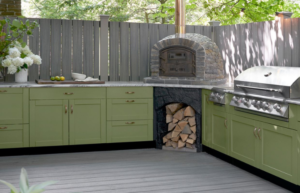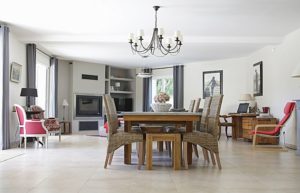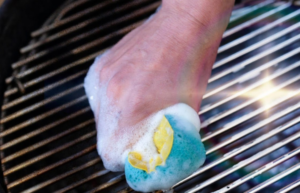8 tips to make your firewood last longer this winter
Firewood is a great way to keep warm on cold nights and chilly months. It’s a natural heating option that is both organic and environmentally friendly, since it doesn’t emit ozone or contribute to the carbon footprint.
Some people might argue that using firewood is actually harmful to the environment, since it involves killing off trees. However, it’s possible to use firewood in a conservative way that protects forestry. For example, you could choose to get wood from sources that are verified as environmentally sustainable.
One way to assure this is to only use wood from fast-growing trees, so that they can be replaced in a time-efficient manner. You could choose to collect wood from dried sticks and twigs have already fallen off trees, rather than chopping down healthy forestry for your warmth. Also, for every tree you cut down, plant two or three new ones.
Once you have the firewood inside your home, you can use a few tips and tricks to make it last longer, which necessitates the death of fewer trees in your quest to stay warm. Some of these tricks are counter-intuitive, while others are things you may have inadvertently applied on childhood camping trips.
If you were ever a scout, or if you ever had a beach bonfire, you might remember blowing on a fire to make it the flames burn higher. You probably didn’t think about the physics behind it. You just blew because it worked, or because some adult said it was a good idea. You might even have used bellows, a piece of cardboard, or a bucket lid to fan the fire.
The reason this trick worked is that it improved the movement of air. Introducing more air to the fire means you’re adding the amounts of oxygen, which makes the wood burn more effectively. There is less wasted wood, and any gas particles trapped inside the wood will be released in the form of heat, making the fire burn brighter.
Burn your logs in a space that has open air circulation, like a window or a chimney. The free flow of air is good for the fire, and will ensure the wood burns thoroughly, producing higher, stronger, hotter flames and burning the wood right through.
The next piece of advice may seem counter-intuitive. You probably try to burn one log at a time, so that your pile of fuel stretches out longer. Unfortunately, this means that one piece will not burn in efficient manner. It will quickly die out before it has burned all the way through, and you will have to use a larger amount if wood to restart the fire.
Instead, add two or three logs at a time. Firewood doesn’t light up instantly like a gas flame. It goes through a burn cycle that works in multiple stages, usually three. If you just have one piece of wood, different parts of the wood will go through different stages, and that will slow the burn and kill it off completely. Use more logs to widen the fire surface, which makes for a longer flame duration.
Bonfires are generally lit from the bottom to produce higher flames, but with internal wood stoves, light the fire at the top for a hot, slow burn. Allow air to flow from the bottom though, by leaving the stove door open and facing it in the direction of the breeze. The turbulent air makes the burning process more efficient so the fire stays hotter for longer.
When you go to bed, don’t close the stove door to keep the fire burning. It will make the fire die out before the wood has burned through. Instead, add several large logs and give the fire lots of air, preferably leaving the door open for more heat, less smoke, and more even burning.
Also, consider the type of wood. Start the fire with softwoods, which burn faster but produce less heat, so they’re good for getting the fire going. As the night wears on and the chill deepens, switch to hardwoods for higher fire temperatures. Softwoods are also less smoky, so they provide less irritation while you’re still awake.
What does a good fire look like? Less smoke. More steam. Dense cloudy fumes mean the wood is not burning all the way through. That thick dark smoke mainly consists of unburned gases that are essentially wasted heat. Good smoke should be light, minimal, and have very little smell. If your fire is too smoky, improve air circulation to make your wood burn through.
Soot is a bad sign too, because it retains heat, which means the wood doesn’t burn as well as it could. Get rid of all soot, because even one or two millimetres of that fine black powder can snuff out your firewood.





